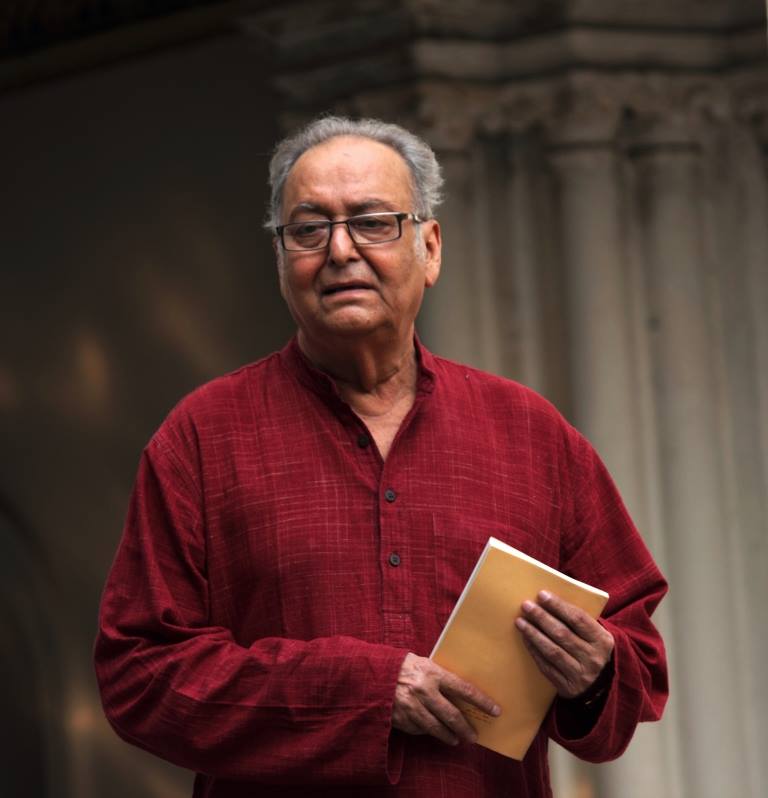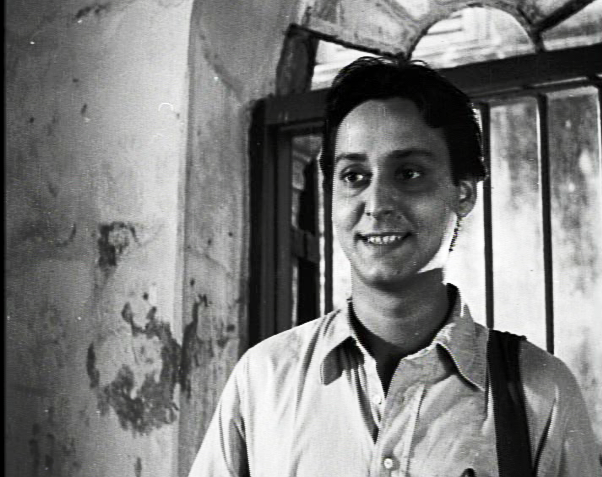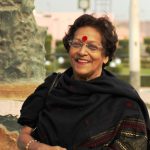Soumitra Chatterjee, who passed away recently of post-Covid -19 complications is one of the best things that could have happened to Indian cinema. Sad that national cinema had never tapped the potential of this great personality. Sadder still that his contribution to Bengali art and culture is always linked only to cinema and that too, only with the name of Satyajit Ray and his films. There is much more to Soumitra Chatterjee than acting in 14 out of the 25 films of Ray.
For 60 years, from Satyajit Ray to Tapan Sinha to Mrinal Sen to Gautam Ghosh and Aparna Sen, all major directors have utilised Soumitra Chatterjee’s enormous talent. The thespian talent has also enriched television. He bagged the National Award for Podokhhep, directed by Suman Ghosh. Other awards include the Padma Bhushan, and the Sangeet Natak Akademi Award for his contribution to theatre, besides the Dadasaheb Phalke Award that he won in 2012.
He was perhaps, the only Phalke winner whose talent went far beyond acting in his mentor Ray’s films and also beyond films per se. He had done television; he wrote, directed and acted in plays as varied as Neelkantha, through the Bengali adaptation of Antony Schaffer’s famous play Sleuth to King Lear to Atmakatha by Mahesh Elkunchwar all in Bengali. He was in great demand as an anchor and commentator in music, radio and theatre programmes and was a brilliant recitation artist who knew Rabindranath Tagore’s Shonchoyita by heart which he could fluently quote from memory. He was a brilliant elocutionist too. He has left behind around a dozen books of poetry besides an abstract translation of Kahlil Gibran’s The Prophet. He jointly edited one of the best Bengali literary magazines called Ekkhon for many years with Nirmalya Acharya. The publication ceased after Acharya’s death. Except for Bhupen Hazarika, without meaning to belittle the other Phalke awardees, Chatterjee is perhaps the only multi-dimensional personality to have graced the award instead of the award having graced him.

Amitav Nag, an IT professional who edits a brilliant film journal, Silhouette, says he is an ‘enigma’ who, like Amal, the character he portrayed in Satyajit Ray’s Charulata, stormed into films like a comet but stayed on for 60 years. Who is Soumitra Chatterjee? Is he the actor who brought characters to life in 15 films by Satyajit Ray beginning with Apur Sansar (1959) and ending with Shakha Proshakha (1990)? Or, is he the man who found it easier to cope with cancer at 77 through The Third Act, Therefore, a play he wrote, directed and acted in last year? Actor-director-poet-writer Soumitra Chatterjee, suffering from cancer, presented his autobiography as a live stage performance. He also entered the world of jatra in 2003. Jatra is a travelling theatre form that moves from place to place.
A BBC documentary on his life and works called Gaach, meaning ‘tree’ has also been made. He has directed and acted in more than ten significant plays with successful shows abroad. His books on poetry began with Jalapropater Dharey Dandabo Bole (To Stand by the Waterfall) in 1975. Droshta, an abstract translation of Khalil Gibran’s The Prophet, was published in 1995.
He has acted in around 300 films, ranging from 14 films of Satyajit Ray and crassly commercial potboilers. He held on to his own even when Uttam Kumar was the reigning super-star. He had a different style, approach and method in acting which impacted on his screen image. “Working with Uttam Kumar when he was already at the peak did not intimidate me because we shared a close family bond. I had seen him for the first time at my sister’s wedding. He was a close friend of the groom. Working together for the first time in Tapan Sinha’s Jhinder Bandi (1961) only strengthened the friendship that continued till his death. There were fights but at the end of it all, he was like my elder brother,” said Chatterjee.
Ironically, Soumitra was rejected for a role in Neelachale Mahaprabhu after a screen test a few years before he was chosen to play Apu in Ray’s Apur Sansar. About his work alongside Uttam Kumar, Chatterjee said, “Uttam Kumar gave me a tremendous sense of competition. I had to deal with it on my own terms, without either imitating him, or being influenced by him. We were more like the East Bengal and Mohan Bagan football teams. Calcutta would always be divided into two warring groups when it came to choosing between the two of us. And we acted together in quite a few films. I did have my box office potential as hero. I would not have lasted this long if this had not been so.”
Making his screen debut as the historic Apu in Satyajit Ray’s Apur Sansar in 1959, Soumitra Chatterjee had acted in around 300 films over time till his passing away and some of his new films are yet to be theatrically released. It is perhaps a record of sorts, in terms of the popularity he commands – less as a star – more as an actor.
Yet, the National Award remained the proverbial mirage in a desert for many years. He never created an aura of elusiveness around him in terms of making a distinction between art films and commercial films. Just as one can watch him express a scene with Debasree Roy in Rituparno Ghose’s Asookh, one can also be privy to a Soumitra Chatterjee performance in a crassly commercial film like Swapan Saha’s Baba Keno Chakor. He acted under the directorial baton of a much younger star like Chiranjeet in Bhoy. Likewise, he did not permit his ego to come in the way of an important role in his co-star Aparna Sen’s Paromitaar Ek Din. His play Neelkantha, written and directed by him with himself in the title role, first staged in 1988, was revived on the Calcutta stage and would draw a full house every time. Ekshan, one of the best literary magazines in Bengali was jointly edited by Chatterjee along with his friend Nirmalya Acharya. It ceased publication after Acharya passed away. Old issues of Ekhhon are considered an archival treasure.
“A serious interest in cinema started with the first Film Festival held in Calcutta after my parents shifted to Calcutta from Howrah. For the first time, I watched Bicycle Thieves, Miracle in Milan, Fall of Berlin, with friends equally interested in cinema. These films changed my entire thinking about cinema. We saw Renoir’s River, shot completely in India. Then came Pather Panchali. Ray made four films before he did Apur Sansar. I now feel for me, those films were sort of a preparation for what was to come – my first film Apur Sansar,” he reminisced.
When asked to recall of few of these, he mentions Tarun Majumdar’s Sansar Seemantey, Raja Mitra’s Ekti Jeebon, Tapan Sinha’s Jhinder Bondi, Kshudita Pashan, Atanka and Wheelchair, Ajoy Kar’s Saat Paake Bandha, Mrinal Sen’s Akash Kusum, another film by Saroj De called Kony where he played a swimming coach trying to establish a girl in her struggle against poverty and sports politics as a champion swimmer and of course the Ray masterpieces.
To state simply, he redefined the meaning of Bangla culture and kept his focus on sustaining the richness of Bengali language and Bengali culture as he knew it.


 [/column]
[/column]